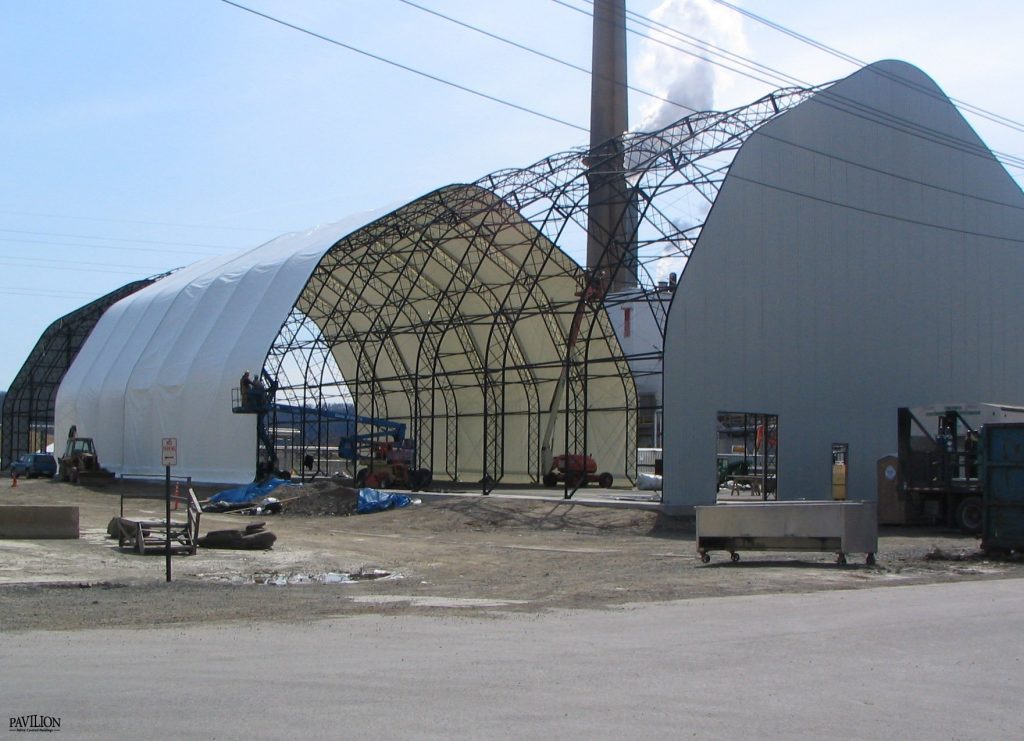The world is continuously evolving. What it does mean is that there is a consistent evolution and upgradation that happens across not only industries and technology but also people as well. Humans as a species are not satisfied and feel the continuous need for change, the result of which is stone caves becoming wood houses, then cemented buildings, and finally the spectacularly massive skyscrapers we see today. Thus, this rampant need to bring in the new has enabled metal building construction services all over Canada to go from simple steel buildings to towering skyscrapers to finally various designs of fabric-covered structures.
Fabric-covered structures
It was mentioned earlier that the world is evolving, but this evolution has a limit. This is purely because our world only has a limited capacity of resources, after which we can only wait for destruction. This has led to the need to find more environmentally conscious and sustainable ways of living. Architects and construction companies have been burdened with this thought as well, feeling the need to implement strategies that lower environmental impact, maximize resources, and reduce construction waste. Fabric architecture offers an extensive range of benefits, including playing an important role in preserving older buildings, transforming existing structures, and increasing property values.
•Transformation instead of reconstruction: Fabric-covered architecture enables the production of countless solutions for blending both style and functionality to ageing structures to help achieve a successful construction while supporting environmentally friendly practices. Suppose we are looking to reduce construction waste and environmental impact. In that case, we might consider not destroying buildings at all, rather repurposing them—especially as 40% of all carbon is added to the atmosphere due to the construction and operation of buildings and infrastructure. Additionally, being energy-efficient is also a consideration. Tensile facades—architectural shading solutions implemented to reduce energy usage—empower the introduction of passive cooling techniques and reduce the solar heat gain.
•Being sensitive to light: Fabric-covered structures allow the passage of natural sunlight to create a comfortable, well-lit, and aerated environment. These buildings also have a high degree of transparency and reduce operating costs without using any electricity. Fabric covers used here are translucent enough to let in an abundant amount of sunlight and prevent shadows, eliminating the need for additional supplemental lighting.
•Being sensitive to temperature: Fabric-covered structures, to reduce environmental impact, opt for a structure with a polyethylene fabric cover. Polyethylene is used in climate-sensitive covers that help regulate interior temperatures. During summer, climate-sensitive covers can decrease interior temperatures by up to 20°. However, during the wintertime, covers have the reverse effect, retaining heat and should keep temperatures 20° higher. As a result, climate-sensitive covers can save money and reduce the negative effects of heating and cooling systems.
At Pavilion Structures Canada, we recognize the need to keep being environmentally conscious and sustainable at the forefront of all our designs. This is why our fabric-covered structures are extremely suitable for our various building models. In addition, our 60 years of experience and range of expertise allow us to build various temporary and permanent fabric-covered structures, all with an 18-year warranty. Pay our website a visit to have a further look at our designs, and our team will help with you any concerns you might have.
wordpress theme by initheme.com


